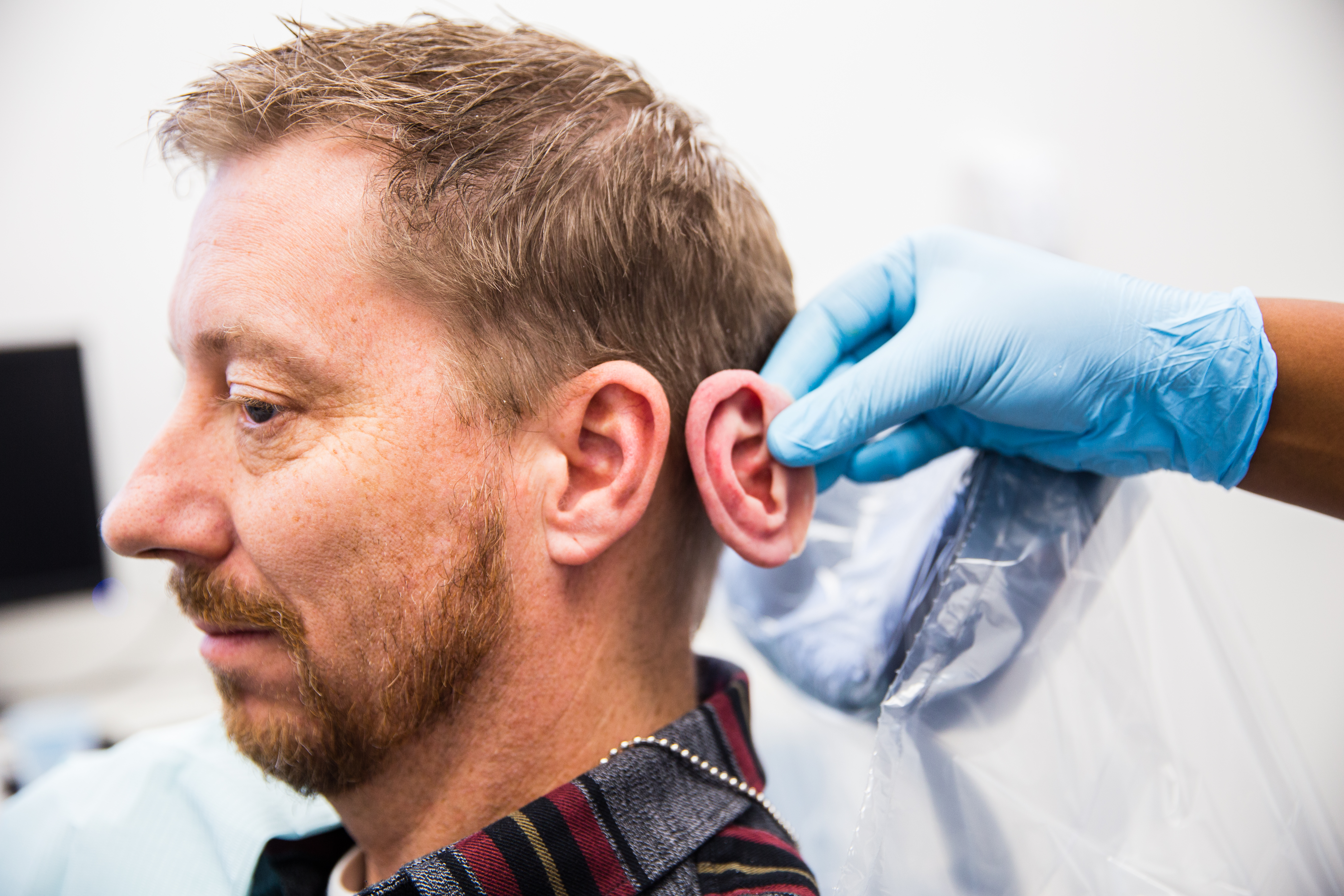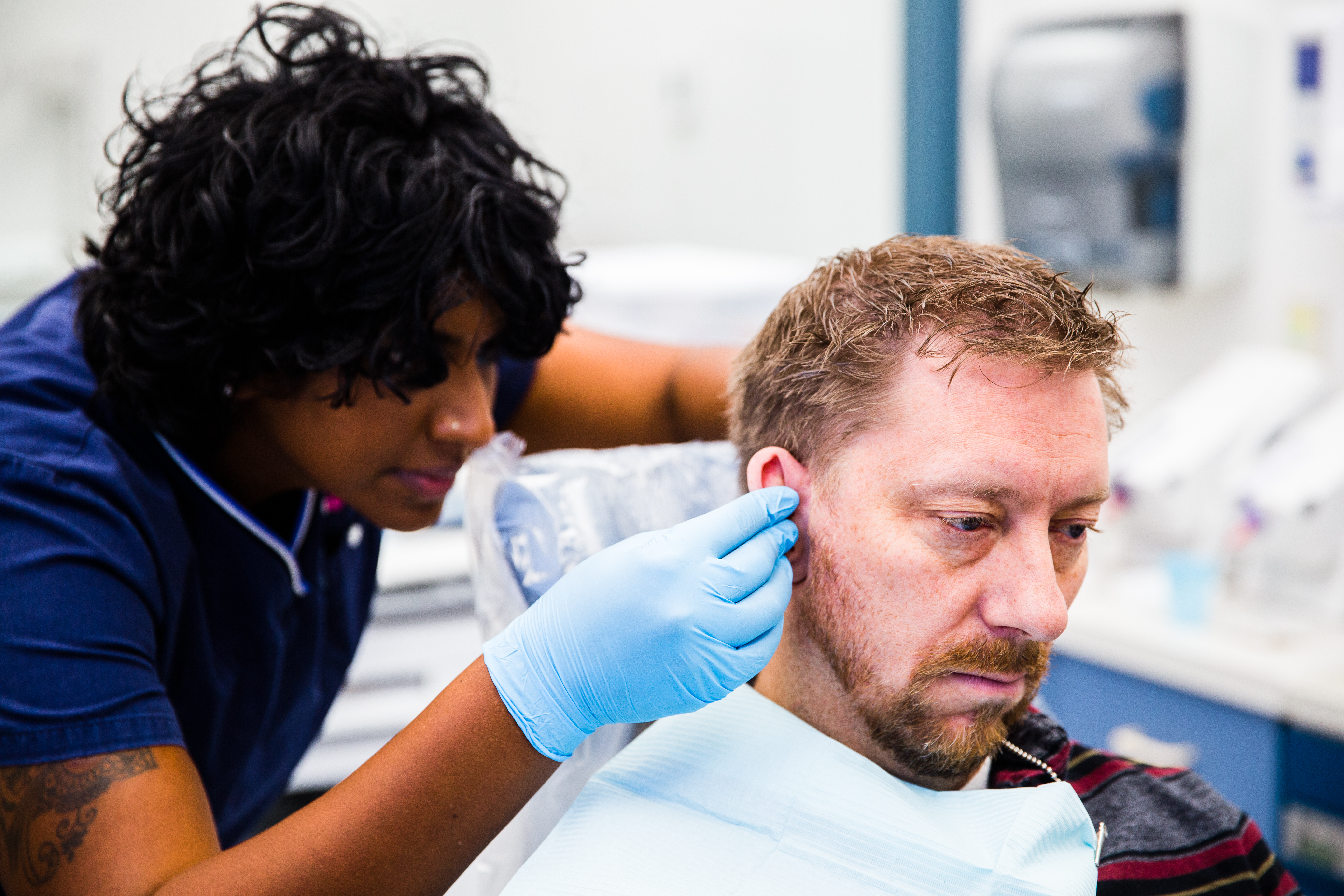
Today, at 48 years old, Michael Brown, an IT account manager and father of two is on his fourth set of ears and sound processor-and says he couldn't be happier. (Photo: Iconium Inc.)
"It defined who I was, how I met people, where I stood in the room-even where I would sit in the movie theatre," said Brown. "I was defined by what I wasn't, not who I was."
It wasn't until Brown was introduced to the Institute for Reconstructive Sciences in Medicine (iRSM) 13 years ago that he received a bone-conduction hearing aid and a prosthetic ear. Today, at 48 years old, the IT account manager and father of two is on his fourth set of ears and sound processor-and says he couldn't be happier.
"Implanting the cochlear Baha and getting reconstructive surgery insurmountably altered my life," said Brown. "I blend in now. I no longer have to stand out."
Brown shared his story at the annual iRSM Research Forum on Wednesday, May 24, from 2:00 p.m. to 4:00 p.m. in 2-44 Corbett Hall (8205 114 Street) at the University of Alberta's Faculty of Rehabilitation Medicine. This year's forum was entitled Patient-Powered, highlighting the patient's role in research. Roxana Anderson, Ros Dowse and Kimberly Flowers, survivors of head and neck cancer and patients of iRSM, also shared their experiences and how they became research advocates, empowering patients and impacting cancer and rehabilitation research.
iRSM specializes in osseointegration technologies - implant technology - to patients with head and neck defects resulting from cancer, trauma and congenital conditions. A joint initiative of Alberta Health Services, Covenant Health and the University of Alberta, iRSM has a world-renowned team of surgeons, maxillofacial prosthodontists, anaplastologists, surgical designers, speech-language pathologists, audiologists, dietitians, technicians and researchers.
"iRSM in Edmonton became my second home, taking care of both my sound processor, my prosthetic, my mental health and my change in life," said Brown who currently resides in Calgary. "I try to give back to the clinic in any way I can."

iRSM Anaplastologist Akhila Regunathan fitting
Michael Brown with his new ear. (Photo: Iconium Inc.)
These days Brown gives back by encouraging and advising patients at iRSM who are considering reconstructive surgery. "I just got a call last week from a burn victim who had no ears. I can't tell him what to do, but I can share my own journey with him in hopes that it will encourage him, no matter what he decides."
He also continues to volunteer for new bone conduction technology studies whenever he can.
"Bill Hodgetts from iRSM and U of A is at the forefront when it comes to this technology and research. I've worked with him and appreciate his approach," said Brown. "I believe we will move to a point where the sound processor will be permanent, but without patients willing to take the risk and be part of that research group, the tech and advancements in this part of the field won't move fast enough."